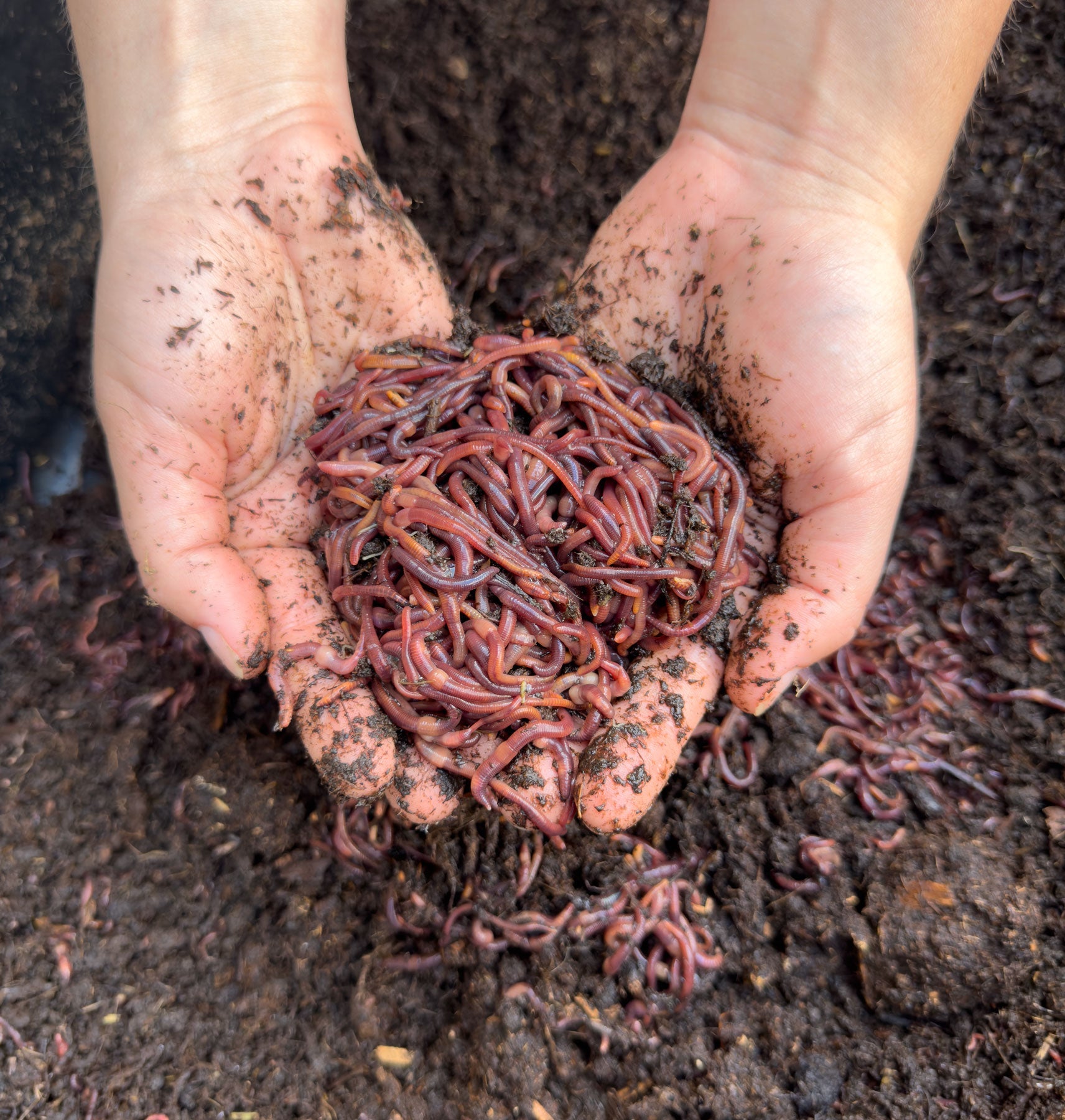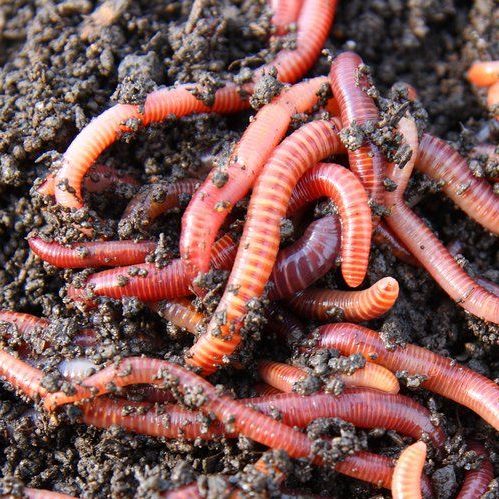Red Wigglers: The Unsung Heroes of Organic Waste Recycling
Red wigglers, or Eisenia fetida, act as critical agents in the organic waste recycling procedure, transforming thrown out materials right into beneficial vermicompost. Their reliable break down of natural issue not only enhances dirt top quality yet also contributes to lasting waste administration methods. As the world progressively seeks services to deal with waste build-up and enhance farming performance, comprehending the duty of these worms comes to be crucial. What systems permit them to flourish in compost environments, and how can they be successfully utilized in both property and industrial setups? Discovering these questions exposes the broader ramifications of vermicomposting in our environmental landscape.
What Are Red Wigglers?
The exceptional resilience of red wigglers, clinically referred to as Eisenia fetida, emphasizes their vital function in organic waste recycling. These little, reddish-brown earthworms are typically found in decomposing raw material, such as compost piles and manure lots. Lake Hickory Bait. Unlike other earthworm species, red wigglers grow in nutrient-rich environments and are highly efficient at breaking down natural products, making them necessary for vermicomposting

(Red Wiggler Express)Along with their role in waste reduction, red wigglers add to dirt wellness by improving soil structure and oygenation via their delving activities (Lake Hickory Bait). Their presence in composting systems not only improves disintegration prices yet also promotes a sustainable technique to lose monitoring, highlighting their importance in ecological conservation initiatives
Benefits of Composting With Worms
Composting with worms, especially red wigglers, offers many benefits that boost both waste monitoring and soil health. These worms successfully damage down natural waste, transforming it right into nutrient-rich vermicompost that enhances soil. This process speeds up decay, permitting a faster recycling of kitchen scraps and other natural products contrasted to standard composting techniques.
Additionally, the vermicompost produced by red wigglers is including beneficial microorganisms, which aid boost dirt structure, aeration, and dampness retention. This improves the general health of plants, advertising strenuous growth and enhanced yields in gardens and farming setups. The usage of worms in composting reduces the production of greenhouse gases, such as methane, adding to a more lasting waste monitoring system.

Just How to Start Vermicomposting
Establishing a vermicomposting system is a straightforward procedure that can generate significant benefits for both waste monitoring and dirt enrichment. To begin, select a suitable container, such as a plastic bin or wooden box, with appropriate air flow openings to make sure correct air movement. The measurements should ideally be around 2 feet by 3 feet, permitting ample space for the worms to thrive.
Next, prepare bedding material, which can consist of shredded paper, cardboard, or coconut coir. This bed linens needs to be dampened to develop an ideal environment for the worms. When the bed linen is in place, introduce red wigglers (Eisenia fetida) into the bin, commonly around one extra pound of worms for each square foot of area.
Complying with the placement of worms, include natural waste, such have a peek here as fruit and vegetable scraps, coffee premises, and crushed eggshells. With these actions, you will properly start a vermicomposting system that contributes to lasting waste management and enhances your dirt.
Maintaining a Healthy Worm Container
(Red Wiggler Express)Maintaining a worm bin thriving needs regular interest and care to make sure the health of the red wigglers and the performance of the composting process. Appropriate maintenance begins with monitoring the wetness degrees; the bin must be damp however not saturated. A good policy of thumb is to maintain a consistency comparable to a wrung-out sponge.
Aeration is important too. Delicately mixing the bed linen and food scraps every couple of weeks stops compaction and guarantees that all worms have accessibility to oxygen. Additionally, it is vital to feed the worms properly. A well balanced diet of vegetables and fruit scraps, coffee premises, and smashed eggshells should be used in small amounts to stay clear of overfeeding, which can lead to odors and bugs.
If the container comes to be also hot or chilly, the worms may become worried. By faithfully handling these elements, one can maintain a durable and effective worm bin.
Impact on Sustainable Living
The effective upkeep of a worm bin not only profits the health and wellness of red wigglers however also adds significantly to sustainable living practices. By reusing natural waste, such as kitchen scraps and lawn particles, red wigglers assist divert substantial quantities of material from landfills. This decrease in waste not only lowers greenhouse gas exhausts but additionally lessens the environmental burden related to waste administration.
Moreover, the spreadings produced by red wigglers offer as a nutrient-rich organic plant food, improving soil health and wellness and promoting plant development. This natural option to chemical fertilizers sustains sustainable agriculture and horticulture methods, reducing reliance on artificial inputs that can harm ecological communities. Furthermore, worm composting cultivates understanding of waste monitoring, motivating people and neighborhoods to adopt even more lasting practices.

Verdict
In summary, red wigglers act as important contributors to organic waste recycling with their efficient decay of natural products. Their ability to create nutrient-rich vermicompost enhances dirt health and sustains lasting agricultural methods. By integrating vermicomposting right into waste management strategies, individuals and neighborhoods can significantly reduce waste while promoting environmental sustainability. The role of Eisenia fetida in promoting healthy ecological communities highlights the significance of these organisms in attaining sustainable living and enhancing dirt fertility.